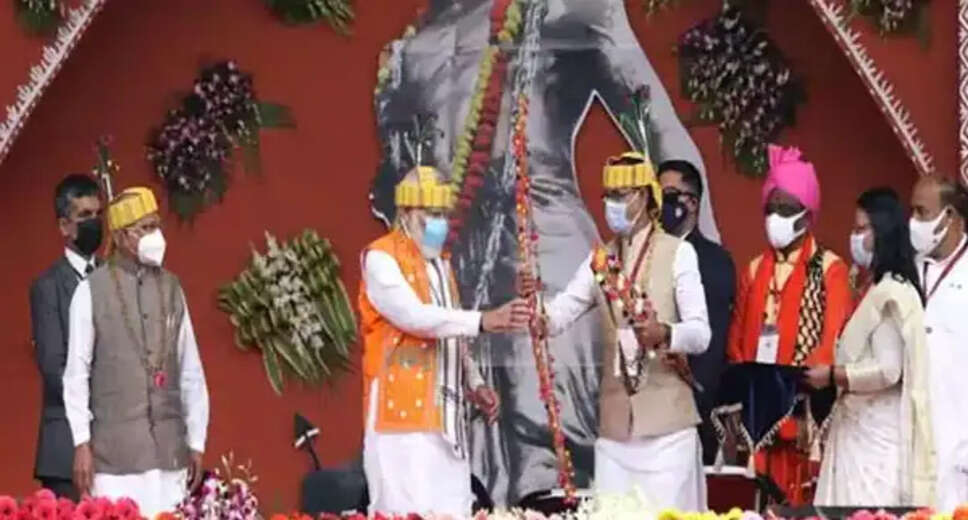Education and awareness is the only means of empowerment of tribals, events like Tribal Pride Day will also be meaningful

Employment News-The decision to celebrate 75 years of independent India as 'Azadi Ka Amrit Mahotsav' was taken by the Government of India in March this year. The purpose of this festival is to introduce the citizens of the country, especially the youth, to the glorious culture of India and to introduce them to the lives of all the famous freedom fighters as well as all those anonymous freedom lovers who are lost somewhere in this modern era. . Through this festival, which lasts for 2 years, the countrymen will be made aware about the achievements so far and the sacrifices made by the freedom fighters in the freedom struggle. In this sequence, under the leadership of Prime Minister Narendra Modi, the Union Cabinet has declared November 15 as 'Tribal Pride Day'. Under this program, all the tribal sacrificers including Baba Birsa Munda of the tribal community were remembered, who sacrificed their everything for the freedom of this country.
This day brings us Birsa Munda, Tantya Mama, Bhima Nayak, Khajya Nayak, Shankar Shah, Raghunath Shah, Rani Durgavati, Badal Bhoi, Ganjan Singh Korku, Manshu Ojha, Raghunath Shah and many others, who are lost somewhere in the pages of history, Like will give an opportunity to know the life of tribal heroes.
The initiative taken by the Modi government to introduce today's youth and modern society from the pages of history is certainly commendable. Such innovative and positive steps by the government will prove to be a milestone in removing the veil of ignorance and misleading propaganda being done against the tribal community. At the same time, it will also act as a catalyst for connecting the tribal society with the mainstream. This awareness movement will encourage the tribal community for their active participation in building a self-reliant India.
It cannot be denied that education and awareness are the two important tools all over the world which are able to free people from socio-economic curses. That is why, we need to set up a strong education system and an awareness campaign infrastructure for the development of the tribal community. Educationally empowering society lays a foundation for our belief in the words of Swami Vivekananda, in which he said that real education is that which enables the individual to stand on one's own feet.
A survey conducted by the Tata Institute of Social Sciences (TISS) on tribal education in the year 2019 revealed that schools for tribals were located far away from their village settlements. Which inadvertently created a hindrance for the tribal students to continue their elementary education. The apathy of the teachers towards the tribal students further distanced them from education. Apart from this, lack of infrastructure like electricity, well-maintained toilets, increased risk of diseases among children made the situation of education more dire.
According to a report by the Parliamentary Committee on Education, about 55% of tribal students drop out of schools at the primary level, while 71% choose to drop out at the secondary level. Years of alienation from the mainstream and cultural differences have created a gap between the tribal society and the mainstream. This difference is reflected in their lower learning levels, conversational style and increased school dropout rates.
In the direction of educating and making tribal society aware, the central government has set a positive example by ensuring the establishment of institutions like Ashram School, Eklavya Model Residential School, Kasturba Gandhi Balika Vidyalaya, providing pre-matric scholarship and vocational training center. . Now there is a need to make the state governments aware and educated by providing holistic education in the tribal areas of the country.
Over the years, various important topics were kept out of discussion by many academicians and policy makers while planning to educate tribal students. Inclusion of important subjects like social culture and language in the system of education will boost the knowledge and abilities of the tribal students and will help in strengthening the tribal education system in the country.
Even Article 350A of the Indian Constitution states that adequate facilities should be available to the students in each state for giving instruction in their own language. If the primary medium of instruction can be given in the mother tongue, then gradually they can be taught regional languages as well. States like Madhya Pradesh and Odisha have made remarkable progress in this direction by educating tribal children in their mother tongue, which has generated keen interest among these students to pursue higher education.
A large section of the total tribal population of the country lives in Madhya Pradesh, which is one fifth of the total population of the state. The Government of Madhya Pradesh has made remarkable progress towards the all-round development of the tribes, especially in strengthening the status of education. The state government has increased its tribal welfare budget to ₹8085.99 crore for the financial year 2020-2021. This increase in the budget has not only shown the intention of the government towards tribal welfare but has also provided a great deal to make the life of the students pursuing higher education from class 1 onwards easier.
